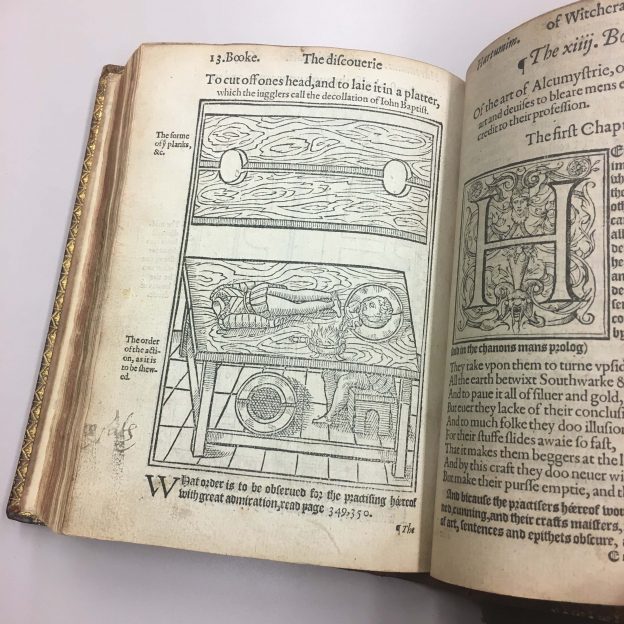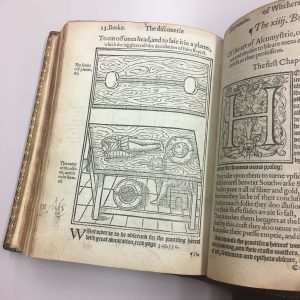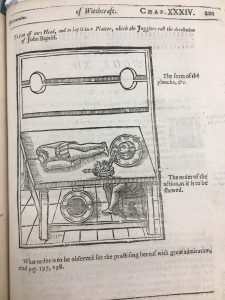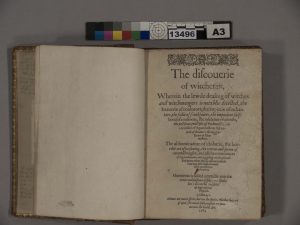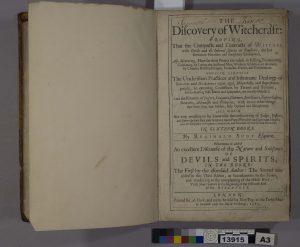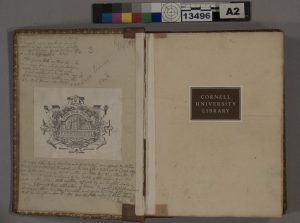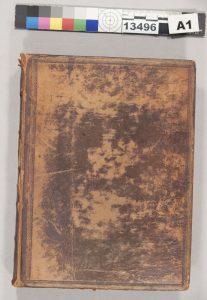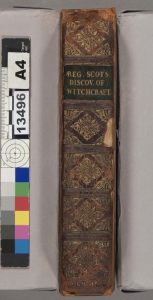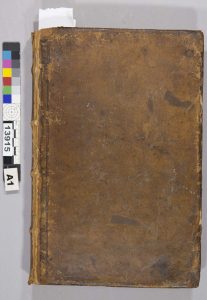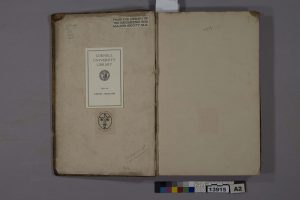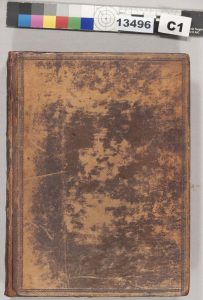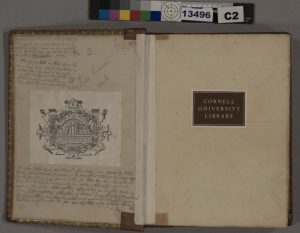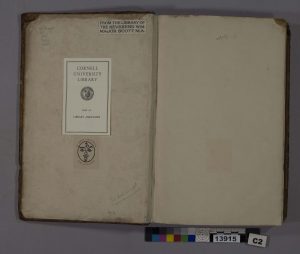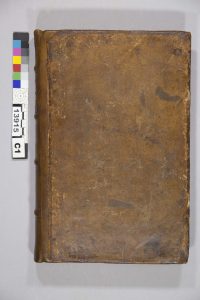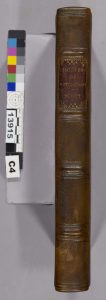by Michele Brown
An oldie, but goodie: “to cut off one’s head, and to laie it in a platter, which the iugglers call the decollation of Iohn Baptist” from The discouerie of withcraft [The discovery of witchcraft] by Reginald Scott. This wonderful work argues against the existence of witchcraft and includes descriptions of popular jugglers’ tricks. Look for the 1665 edition in the “ Skeptics and Dissenters ” case in the Witchcraft exhibit now in the Hirshland Gallery of the Carl A. Kroch Library. Cornell’s Witchcraft Collection also includes a copy of the 1584 edition.
Produced by different printers 80 years apart, there are interesting variations in the illustrations of these 2 editions.
The typography of the the title pages is also very dissimilar.
The 1584 edition is notably smaller. It appears to have been severely chopped–possibly during the rebinding process. It’s unlikely that the current binding is its first.
Our curators prefer minimal intervention and have asked us to retain evidence of previous repairs and other signs of use. These 2 volumes provided different treatment challenges.
The 1584 edition came into the lab in 2016. It had been rebacked with calfskin at some point in its history, and this repair was showing signs of fragility. The inner joints were cracked, the head and tail caps were worn, 2 corners were worn, and there were losses on the spine, but the boards were still attached. The repair was still doing its job, but needed to be revitalized.
The 1665 edition came into the lab because it was selected for the current Witchcraft exhibit. At some point, it had been rebacked with sheepskin. What appears to be the original spine label had been retained. New endsheets had been added and pasted over the original pastedowns–probably as part of the repair. The outer and inner joints were broken and the boards were detached. The sheepskin spine was dessicated and its top layer was peeling off. This repair was no longer effective.
In both cases, we retained evidence of the previous repairs, but the 1665 edition required more intervention.
Treatment of the 1584 edition:
We filled losses and reinforced the weak inner joints using various Japanese tissues applied with wheat starch paste. The loss on the spine was repaired with layers of Kitikata and pure kozo Moriki tissue; the headcap and 2 board corners were reinforced with Moriki, and the inner joints were covered with Sekishu. Essentially, we repaired the repairs.
Treatment of the 1665 edition:
Since the boards were detached, we opted to reback this volume with leather. We chose fair goatskin from J. Hewit because that leather is of good quality and looks similar to sheepskin. We repaired the “new” endpapers. The spine from the previous repair was too deteriorated to use (that would have been preferred), but we retained the spine label and added blind tooling to mimic the previous rebacking.
If a leather binding needs to be completely rebacked, we will generally use leather as the repair material. To facilitate reversibility, we line the spine with Japanese or Korean tissue using wheat starch paste before adding a lining of unbleached cotton. Strength is added to the joints by extending this cotton lining onto the boards.
Our protocol for leather rebacking is quite similar to that described in James Reid-Cunningham’s workshop in leather rebacking at the Guild of Book Workers 2013 Standards of Excellence.
There was a time when we might have tried to remove the earlier repairs before adding our newer, “better” treatments. Now, as we focus on maintaining the history of use of our collections, we retain these repairs and work around them.
Descriptions of the “decollation of John Baptist” and other tricks (“thrust a bodkin into your Head, and through your Tongue &c.”) are in Book XIII, Chapter XXXIV. Both editions of The Discovery of Witchcraft, may be viewed through Early English Books Online via the Cornell catalog.
